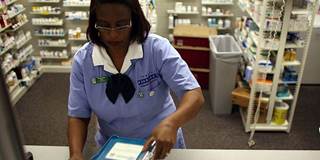If the abuse of antibiotics does not end, we will soon find ourselves without drugs to treat bacterial infections effectively. While some steps in the right direction are being taken, a global rating system for drug companies would give them strong incentives to combat the problem.
MEXICO CITY – From the discovery of penicillin in 1928 to the introduction of the last of the main groups of antibiotics in the 1960s, humanity’s capacity to fight pathogenic bacteria has been transformative. But, over time, the number of antibiotics to which bacteria are susceptible has been dwindling, and some pathogens have become resistant to most or all existing drugs. As a result, once-treatable infections are becoming deadly again.
Already, antibiotic resistance is leading to an estimated 700,000 deaths per year, with financial costs reaching tens of billions of dollars. As antibiotic resistance continues to undermine our ability to treat cancers, transplant organs, and implant prosthesis, these figures will only rise.
Many factors have contributed to rising antibiotic resistance. Bacteria can reproduce and mutate rapidly, and they can establish something of a “genetic Internet” that enables certain pathogenic bacteria to “download” antibiotic-resistant genes. Moreover, most antibiotics are natural products of soil bacteria, in which antibiotic resistance can occur naturally. When human-made antibiotics were introduced on a massive scale, the bacteria with resistance became the most prevalent.

MEXICO CITY – From the discovery of penicillin in 1928 to the introduction of the last of the main groups of antibiotics in the 1960s, humanity’s capacity to fight pathogenic bacteria has been transformative. But, over time, the number of antibiotics to which bacteria are susceptible has been dwindling, and some pathogens have become resistant to most or all existing drugs. As a result, once-treatable infections are becoming deadly again.
Already, antibiotic resistance is leading to an estimated 700,000 deaths per year, with financial costs reaching tens of billions of dollars. As antibiotic resistance continues to undermine our ability to treat cancers, transplant organs, and implant prosthesis, these figures will only rise.
Many factors have contributed to rising antibiotic resistance. Bacteria can reproduce and mutate rapidly, and they can establish something of a “genetic Internet” that enables certain pathogenic bacteria to “download” antibiotic-resistant genes. Moreover, most antibiotics are natural products of soil bacteria, in which antibiotic resistance can occur naturally. When human-made antibiotics were introduced on a massive scale, the bacteria with resistance became the most prevalent.